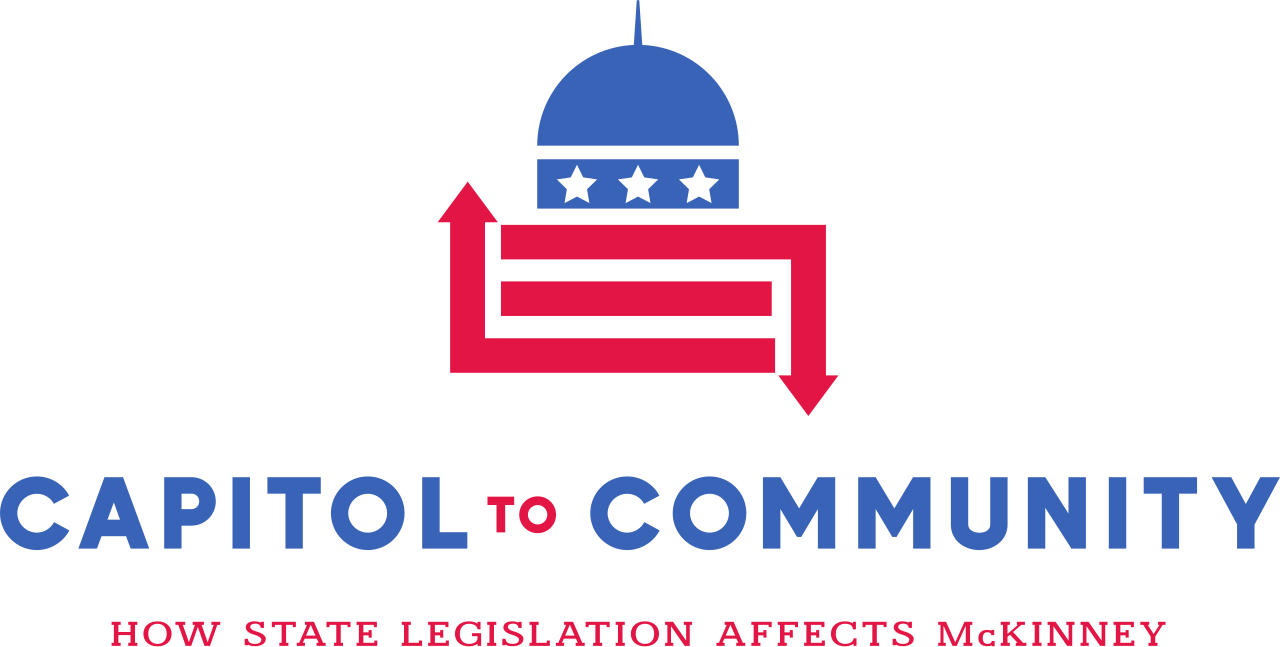Infrastructure: Water and Transportation
What McKinney Needs to Know About Transportation
"Explain Like I'm Five"
Imagine McKinney is a growing city that’s like a toy city you’re building bigger and better every day. To make sure everyone can get around easily, McKinney is working on two big projects:
1.The Airport
McKinney wants to make its airport fancy, like a real-life version of adding more runways and a big terminal to let planes carry passengers. The state of Texas is helping by giving McKinney money and advice to build these things. Someday, it’ll be like McKinney’s own little airport that connects to other big cities!
2.Highway 380
The main road through McKinney, Highway 380, is getting too crowded, like cars stuck in a line of toy traffic. The state is helping widen it so more cars can fit, and it’s making better plans to keep traffic moving smoothly.
But here’s the tricky part: McKinney has to work with Texas (the state) and the U.S. (the federal government) to make it all happen. They help by giving money, rules, and advice, but McKinney has to wait for their approval before building anything new.
So, McKinney is growing super fast, but it has to be really smart about how it builds roads and the airport so everything works perfectly for everyone living here.
Explanation of the Issue
McKinney Transportation Development
As McKinney continues its remarkable trajectory as one of Texas’ fastest-growing cities, the interplay between local transportation needs and state legislative support has become increasingly critical. While the Texas Legislature has allocated substantial funding for regional infrastructure projects like the expansion of Highway 380, the city’s ambitious plans, including the development of McKinney National Airport into a commercial hub, often face a complex web of legislative processes and priorities. The relationship between local transportation initiatives and state-level decision-making demonstrates both the opportunities and challenges of managing rapid urban growth in North Texas, where city planners must carefully navigate state regulations, funding mechanisms, and legislative sessions to advance crucial infrastructure projects that will shape McKinney’s future mobility landscape.
McKinney National Airport Expansion
The transformation of McKinney National Airport represents one of the city’s most ambitious transportation initiatives. The Texas Legislature has demonstrated support through the approval of essential permits and the allocation of state aviation funds for infrastructure improvements. The state’s backing has been instrumental in advancing plans for a new terminal building, extended runways, and enhanced facilities capable of accommodating commercial passenger service. Through the Texas Department of Transportation’s Aviation Division, the airport has received critical technical assistance and regulatory guidance, positioning it to become a significant commercial aviation hub serving the growing North Texas region.
Highway 380 Expansion Project
The expansion of Highway 380 stands as a crucial state-supported initiative addressing McKinney’s rapid growth. The Texas Department of Transportation, with legislative backing, has committed significant resources to this project, which includes widening the highway and implementing innovative traffic management solutions. State representatives have actively championed the project through various legislative sessions, securing necessary funding and expediting the approval process for environmental studies and design plans. The project exemplifies the state’s recognition of McKinney’s strategic importance in the broader North Texas transportation network.
Additional State-Supported Transportation Initiatives
Beyond the airport and Highway 380, McKinney has benefited from state support for several other transportation projects. The Texas Legislature has approved funding for local road improvements, including the enhancement of major arterial roads and the implementation of smart traffic management systems. State grants have supported the development of multi-modal transportation options, including the planning of future transit corridors and the expansion of pedestrian and cycling infrastructure. These initiatives demonstrate the legislature’s commitment to supporting comprehensive transportation solutions for rapidly growing communities.
Federal Support and Collaboration
McKinney’s transportation initiatives have garnered substantial federal support, complementing state-level assistance. Through the Federal Aviation Administration’s Airport Improvement Program, the McKinney National Airport has secured crucial funding for safety improvements and capacity expansion. The Highway 380 project has benefited from federal infrastructure grants, while other city transportation projects have received support through various Department of Transportation programs. This federal-state-local partnership has created a robust framework for advancing McKinney’s transportation infrastructure, with federal agencies providing both financial resources and technical expertise to ensure project success.
McKinney isn’t just building roads and runways: it’s paving the way for a future where our city connects faster, flies higher, and grows smarter than ever before.
What McKinney Needs to Know About Water
"Explain Like I'm Five"
Alright, here’s a simple explanation:
The city of McKinney gets its water from a big group called NTMWD, which uses lakes like Lavon Lake to provide water. But here’s the deal:
1.We need to save water: There’s not enough water for everyone if we waste it. People are asked to water lawns less, do it smartly (not when it’s raining or super cold), and mow their grass taller to keep it healthy without using so much water.
2.Water can get dirty: McKinney’s water is safe to drink, but old pipes in some homes can rust and make it less safe. So, if you have those old pipes, it’s good to check them.
3.Fixing pipes: The city is replacing old pipes that leak a lot of water with new ones. They’ve been working on this for years and plan to finish by 2028.
4.Pollution from storms: When it rains, things like car oil and trash can wash into the water we use. To stop this, the city says we should keep things clean and fix leaks.
5.Dirt problems: When dirt washes away, it can clog water drains and mess up rivers. So, the city suggests planting grass or putting mulch on bare spots to keep the dirt in place.
What’s next?
The area is growing fast, and we’ll need a lot more water soon—like a bunch of big new lakes worth of water! To make sure we don’t run out, the city and NTMWD are working on new projects to get more water and asking everyone to save what we have. That way, there’s enough for everyone in the future!
The City of McKinney faces several water issues, including water conservation, water quality, and water line replacement. (AI)
- Water conservation is #1 issue: The North Texas Municipal Water District (NTMWD) is nearing its delivery capacity and has asked customers to conserve water. The city has a summer water conservation plan, and recommends watering in short cycles, avoiding watering during rain or freezing, and mowing your lawn taller.
- Water quality: The city’s water meets all EPA and TCEQ standards for lead in drinking water. However, galvanized pipes in homes can corrode and rust, releasing lead into the water supply.
- Water line replacement: The city is replacing nearly 14,500 copper service lines with polyethylene pipe to reduce water loss. The project began in 2017 and is expected to be completed in 2028.
- Stormwater pollution: The majority of surface water pollution comes from stormwater contamination, such as engine oil leaks and litter. The city recommends preventing pollutants at their source.
- Sediment: Sediment from erosion can clog storm drains and harm waterways. The city recommends keeping soil in place by mulching or vegetating your yard.
- #1 City of McKinney purchases its water from North Texas Municipal Water District (NTMWD). NTMWD utilizes Lavon Lake as the primary raw water source. Additional raw water sources are supplied by Lake Texoma, Lake Chapman and reuse.
- #2 Local communities are in charge, manage and distribute their own water supply.
- #3 Bois D’Arc Lake’s primary purpose is to supply drinking water to the growing region, and NTMWD began delivering water in March 2023. Over the next 30 years, the population served by NTMWD is expected to nearly double. By 2070, our projections show we’ll need an additional 360 million gallons of water per day, the equivalent of roughly four-and-a-half Bois d’Arc Lakes.
- # 2021 Region C Water Plan – acquiring water rights and moving water from existing reservoirs and groundwater aquifers, the construction of new reservoirs with other partners in the region, and new conservation and reuse initiatives. Plan looking forward to 2070.
Conclusion: It’s going to take a combination of new water supply projects, water conservation and reuse to meet North Texas’ future needs.
Without smart water use today, tomorrow’s McKinney might not have enough to drink—saving every drop now means securing the future for all of us. Let’s make it count!
Download the Quick Start Activation Guide
Download the guide to understand these core issues and how they effect McKinney directly.

